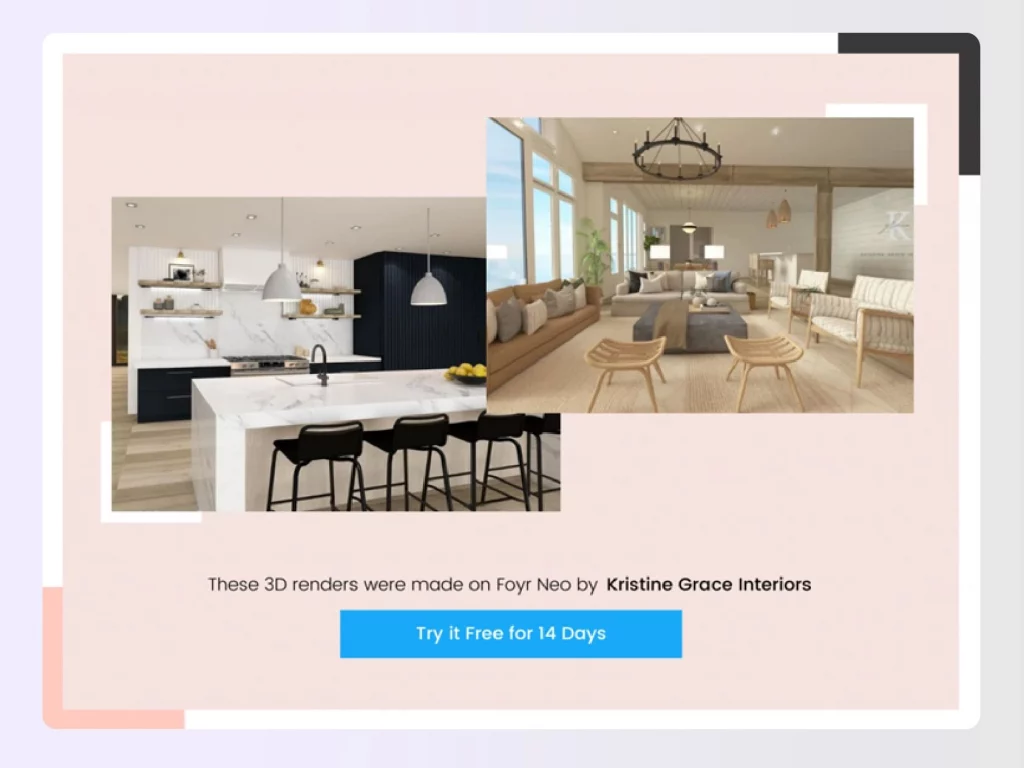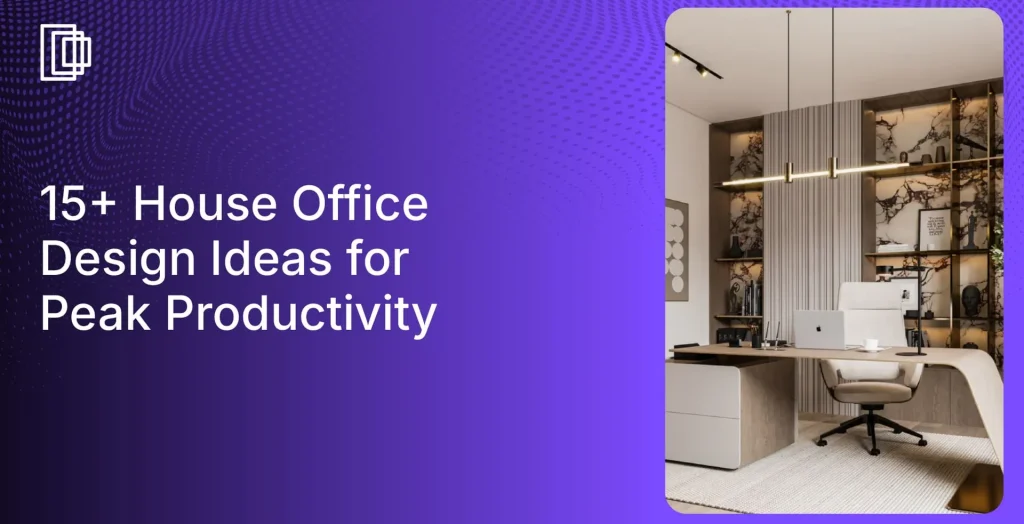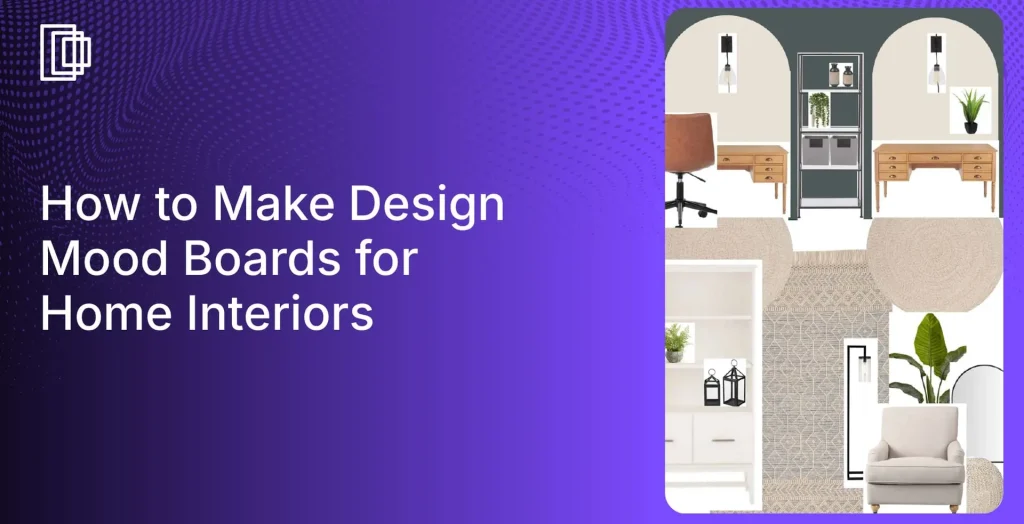Thinking about a career as an interior designer? It’s an exciting path that offers creativity, but it’s important to understand the full picture, including the pros and cons of being an interior designer. Being an interior designer is an exciting career that offers opportunities for creativity and the ability to make informed decisions while creating beautiful spaces.
However, it also has its challenges, including managing client relationships, meeting deadlines, and handling irregular work hours. In this blog, we’ll explore the pros and cons of being an interior designer, including career opportunities, salary insights, and industry challenges.
 What Does an Interior Designer Do?
What Does an Interior Designer Do?
An interior designer works to create functional, aesthetic environments by combining design elements like furniture, color schemes, and layout plans. They play a crucial role in shaping comfortable spaces for clients, considering their preferences and ensuring an effective design journey from concept to execution.
Pros of Being an Interior Designer
When looking at the pros and cons of being an interior designer, the advantages are often what draw creative people to the field.
1. Creative Freedom and Versatility
Interior designers have the opportunity to express creativity and bring ideas to life. This career path offers flexibility in exploring designer roles such as working in a design studio or handling various types of projects, including residential and commercial design services. The ability to tailor each project based on client requirements makes the work fulfilling.
2. Diverse Career Growth Opportunities
Designers have numerous growth paths available, including working at a design firm, joining a design consulting practice, or leading their own interior design business. The design industry has diverse fields, offering chances to specialize in areas like corporate design, residential environments, or sustainable practices.
3. Positive Impact on Clients and Spaces
Interior designers can create positive impacts on people’s lives by improving the aesthetics and functionality of a space. Whether it’s for homes, offices, or commercial spaces, designers have a direct impact on how people experience their surroundings, contributing to a harmonious environment.
4. High Earning Potential and Flexibility
The average salary of an interior designer can range depending on experience, but senior professionals can earn significantly. For those who start their own design consulting business, the potential for high earnings increases further. In addition, this career path allows for plenty of flexibility, offering the possibility to work as a freelancer or within an established company.
5. Diverse Relationships and Opportunities
Interior designers work with clients from all walks of life, which keeps the job interesting. Building strong designer-client relationships is key to understanding preferences and ensuring client satisfaction. Each project provides growth opportunities and challenges to help designers develop new skills and design plans effectively.
Cons of Being an Interior Designer
A balanced view of the pros and cons of being an interior designer involves considering the challenges as well.
1. Difficult Clients and High Expectations
Meeting client expectations can be challenging, especially when difficult clients require numerous changes. Communication with clients is crucial, and difficult people may push designers to adjust their design project budgets and plans. Understanding and managing client meetings is an essential part of the job.
2. Tight Deadlines and Irregular Work Hours
Deadlines are part of the industry, and tight deadlines can lead to extra hours of work. The work schedule may be inconsistent, involving irregular work hours or difficult times when handling multiple projects simultaneously. Time management skills are crucial for balancing work demands with personal commitments.
3. Physical and Mental Challenges
The job requires physical tasks such as site visits, measuring dimensions, and working with materials. The mental workload can also be demanding, with constant pressure to create, manage deadlines, and solve unforeseen issues. This career isn’t without its challenges, and the lack of flexibility in meeting client deadlines can be exhausting.
4. Income Fluctuations and Financial Challenges
For independent designers, income is not always predictable, unlike salaried positions in a design company. While successful designers may earn well, those starting in the industry may face uncertain cash flows. Understanding financial management and building a stable client base are important to overcoming this challenge.
5. Cost of Materials and Budget Constraints
The cost of materials can often be high, especially when clients have specific requirements that don’t align with the allocated budget. Designers must work within budget constraints while still ensuring client satisfaction and delivering affordable materials. Balancing creative ideas with practical budget concerns can be challenging but is part of a designer’s role.
Average Salary of an Interior Designer
Salary potential is a crucial part of the pros and cons of being an interior designer. Let’s analyze this further:
- The starting salary for junior interior designers in Canada typically ranges between $37,000 and $41,000, according to data from the Government of Canada Job Bank and PayScale.
- The median salary for interior designers falls between $56,000 and $60,000, reflecting growth potential in the field.
- Top earners in the interior design profession can make as much as $107,000, showcasing the high earning potential for successful designers.
- Many companies offer additional bonuses, commissions, and benefits on top of the base salary, which can enhance overall compensation packages.
- For those who start their own design consulting business, the income potential may become limitless, depending on business operations and project types.
Education and Qualifications for Interior Designers
- A formal design degree is typically required to begin a career as an interior designer.
- Many states mandate certification, such as the NCIDQ license, as part of the qualifications needed to practice professionally in the field.
- Experience gained through internships or working in design studios is valuable for improving design skills and advancing in the interior design profession.
- While a university degree is beneficial, having a strong portfolio showcasing design skills can sometimes outweigh formal educational requirements in the eyes of potential clients.
- Continuous learning and improvement of existing skills are essential in the constantly evolving field of interior design.
 Relevant Degrees and Certifications
Relevant Degrees and Certifications
- A formal design degree is typically required to begin a career as an interior designer, making education crucial for entry into the field.
- Many states require certification, such as the NCIDQ license, to ensure that designers meet professional standards.
- Experience in design studios or relevant internships is valuable for improving design skills and advancing in the profession.
- Designers with a design degree and relevant certifications may find higher earning potential and more advanced positions in the field.
- Proficiency in design software and a strong portfolio are essential qualifications for aspiring interior designers.
Importance of Portfolio Development
- A strong design portfolio is crucial for interior designers as it highlights their preferred aesthetic and skills, appealing to clients who appreciate a specific design approach.
- Developing a portfolio takes time, effort, and sometimes luck, making it a significant challenge for newcomers in the interior design industry.
- Gaining access to higher-value clients and larger projects is often tied to the quality and development of an interior designer’s portfolio.
- Establishing a reputable portfolio can greatly enhance an interior designers ability to secure clients and projects early in their careers.
- The process of creating and refining a portfolio is essential for career advancement in interior design, as it showcases designers work and creativity.
Career Growth and Opportunities
- Interior designers have numerous growth paths available, including opportunities to work at design firms, join consulting practices, or establish their own design businesses.
- The interior design industry encompasses diverse fields, allowing designers to specialize in areas such as corporate design, residential environments, or sustainable practices.
- The career path of interior design provides flexibility to explore various project types, including both residential and commercial design services.
- Advancements in the interior design career can include moving into architecture or progressing to senior designer roles.
- Continuous learning and individual creativity enhancement are integral aspects of a career in interior design, contributing to professional growth.
Read also – How Much Do Architects Make? and The Average Salary of An Architects
Is Interior Design a Good Career?
A career in interior design can be very fulfilling, especially for those with a passion for creativity. To answer this, one must weigh the pros and cons of being an interior designer personally. Designers have a direct impact on improving people’s spaces and quality of life.
However, it’s also a competitive industry with challenges such as irregular hours, managing client demands, and dealing with deadlines. Weighing these pros and cons of being an interior designer is crucial to making an informed decision about whether a career in interior design is suitable for you.
Key Responsibilities of an Interior Designer
- Interior designers are responsible for creating functional and aesthetic environments by effectively combining various design elements such as furniture, color schemes, and layout plans, often utilizing interior design software to enhance their creative process.
- They must possess a meticulous eye for detail to ensure that every aspect of their design plans aligns with the client’s vision and high-quality standards. Problem-solving skills are essential for interior designers as they often face challenges, such as unexpected structural issues and client requests, that require creative ideas and innovative solutions. Additionally, they frequently work under tight deadlines and need to coordinate with design teams to ensure that projects are completed efficiently. Effective communication and interaction with clients are crucial, as each client has unique preferences and expectations that need to be met.
- Coordinating with contractors, suppliers, and other professionals involved in the design process is a vital responsibility of an interior designer to ensure the successful execution of their design projects.
Benefits of a Career in Interior Design
- A career in interior design allows for continuous creative expression, transforming dull spaces into visually stunning environments that enhance clients’ lives.
- The interior design industry is experiencing significant growth, driven by increasing demand from both residential clients and businesses seeking unique and inspiring spaces. This expansion not only highlights the rewarding aspects of the profession but also emphasizes its potential as a lucrative career.
- Interior design pro provides numerous opportunities for career advancement, allowing professionals to progress into specialized fields such as architecture or senior design roles.
Creative Expression and Artistic Outlet
- Being an interior designer allows for significant creative expression, enabling designers to transform spaces and bring their artistic visions to life while enhancing both aesthetic and functional aspects of interiors.
- Approximately 13% of interior designers surveyed reported that one of their favorite aspects of the job is the creative outlet it provides.
- The interior design profession encourages the development of ones artistic potential, allowing designers to create harmonious environments by combining multiple interior styles and elements.
- Interior designers frequently engage with colors, textures, and patterns, which contributes to a dynamic process of continuous creativity and personal growth.
High Earning Potential
- The average salary of an interior designer can vary significantly based on experience, with senior professionals earning substantially more.
- Starting an independent design consulting business can greatly increase the potential for high earnings in the interior design field.
- Financial rewards in interior design can be considerable, especially for those who establish a strong reputation and client base.
- High-end projects and a robust portfolio can lead to lucrative contracts and commissions for successful interior designers.
- While the potential for high earnings exists, gaining recognition and securing major clients can be a challenging journey in the interior design industry.
Flexible Work Hours
- Many interior designers, particularly those who are freelancing or running their own business, have the flexibility to set their own schedules, allowing for a better work-life balance.
- Regularly reviewing and adjusting ones schedule can help interior designers effectively balance creativity, client meetings, and self-care.
- The ability to create a flexible schedule can enable designers to manage their time more efficiently, especially when it comes to accommodating client needs.
- Flexibility in scheduling is essential for interior designers to navigate the demands of project deadlines while maintaining personal commitments.
- A flexible work arrangement can also help designers mitigate stress by allowing them to work during hours when they are most productive.
Growing Demand in the Industry
- The demand for interior design services is on the rise due to an increase in real estate development and a growing awareness of the importance of well-designed spaces.
- As more individuals and businesses seek the expertise of interior designers, the industry is experiencing a significant expansion, creating numerous opportunities for aspiring designers.
- The global interior design industry is projected to grow at an average annual rate of 5.5% from 2020 to 2027, driven by improving living standards and increasing client demand for unique interior design solutions.
- The growing popularity of interior design reflects a trend toward creating aesthetically pleasing and functionally efficient spaces in both residential and commercial sectors.
- There has been a notable rise in demand for inspiring and creative workspaces and luxurious boutique hotels, further expanding the opportunities available for interior designers.
Opportunities for Career Advancement
- Interior designers can pursue numerous growth paths, including roles at design firms, consulting practices, or by establishing their own business.
- The design industry encompasses diverse fields, providing opportunities for specialization in areas such as corporate design, residential environments, or sustainable practices.
- Gaining technical qualifications in skills like spatial design or 3D drawings can enhance planning-focused design capabilities and open up further career opportunities.
- Collaborating with suppliers, tradespeople, and other designers enriches the creative process and can lead to career advancement through networking and shared knowledge.
- The job outlook for interior designers indicates an average of 8,200 openings annually due to transitions or retirements, presenting ongoing opportunities for new interior designers to enter the field.
Try Your Hand at Interior Designing with Foyr Neo
Interior design is a dynamic field with both rewarding aspects and notable challenges. It combines creativity, strategic planning, and client management. Designers get the chance to work on unique design elements and bring concepts to life while dealing with tight deadlines and client pressures. If you are passionate about creating environments, handling diverse design projects, and using design tools effectively, this career might be perfect for you.
However, the role comes with stressors, such as the pressure to meet client expectations without the option to easily rectify mistakes. Satisfying diverse clients can be challenging, as each has distinct preferences and requirements. Additionally, the job outlook for interior designers indicates minimal growth, with openings primarily arising from workforce transitions rather than new positions.
Foyr is a premier interior design company specializing in all types of interior design, from residential to commercial spaces. With a focus on creativity and client collaboration, Foyr offers the flexibility and growth opportunities that make interior design an exciting career, while also navigating the challenges of long hours and client demands.
Book a 14-day free demo today and see for yourself.
Frequently Asked Questions(FAQs)
1. How much does an interior designer earn annually?
The average salary ranges from $45,000 to $75,000 per year, with senior designers earning significantly more depending on specialization and client reach.
2. What qualifications are required for an interior designer?
A design degree is commonly required, alongside certifications like the NCIDQ. Hands-on experience and knowledge of design tools are also crucial.
3. What are the advantages of being an interior designer?
Advantages include creative expression, diverse job opportunities, and having a direct impact on client satisfaction by transforming spaces.
4. What challenges do interior designers face?
Challenges include tight project deadlines, managing client requirements, working irregular hours, and dealing with difficult clients.
5. Is it a good idea to become an interior designer?
Becoming an interior designer is an excellent idea if you are a creative, detail-oriented person who enjoys problem-solving. While the career has its challenges, the opportunity to transform spaces and impact people’s lives is incredibly rewarding. Using modern tools like Foyr Neo can streamline the design process, helping you manage the cons while maximizing the pros.
6. How do I know if I like interior design?
You might like interior design if you find yourself constantly rearranging furniture, have a keen eye for color and texture, and enjoy solving spatial puzzles. Try creating mood boards or experimenting with design software. Platforms like Foyr Neo offer free trials, allowing you to create 3D designs and see if the creative process excites you before committing to a career path.
7. Is interior design high in demand?
Yes, the demand for interior designers is growing. As real estate develops and people place more value on well-designed living and working spaces, the need for skilled designers increases. This applies to residential, commercial, and specialized sectors. The global interior design industry is projected to grow significantly, making it a promising field.
8. Which is harder, interior design or architecture?
Both fields are demanding but focus on different aspects. Architecture is often more technical, dealing with a building’s structure, safety codes, and exterior. Interior design focuses on the functionality and aesthetics of the space within. The difficulty is subjective; one requires more engineering knowledge, while the other demands a deep understanding of human behavior and aesthetics.










